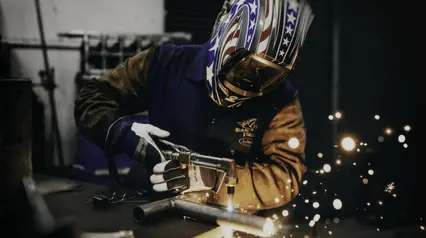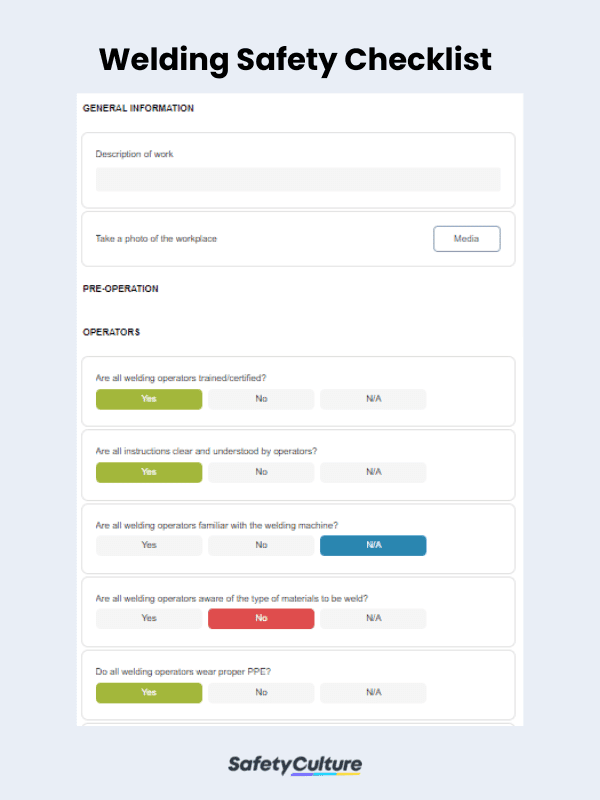What is a Welding Safety Checklist?
A welding safety checklist is a tool used to assess workers’ safety throughout the entire welding, cutting, and brazing processes. It helps ensure compliance with regulatory standards including wearing of appropriate Personal Protective Equipment (PPE), welding equipment usage, and machinery inspections.
A welding safety checklist can also be used when performing site walkthroughs that help record the ventilation systems condition, flammable materials on site, and welding hazards and control.
Welding Safety Equipment List
The welding industry requires wearing appropriate PPE when performing weld. It helps protect welders from the unnecessary incident including skin burns, blindness, or overexposure to fumes and gases. The following welding safety equipment list can protect welders from welding hazards.
- Welding helmet – wearing a welding helmet, hood, or mask can protect welders from sparks and radiation emitted by the arc that can quickly damage the skin and eyes.
- Eye protection – this includes googles or hand-held face shields. This would help prevent eye damage or loss of vision.
- Respirators – this would protect welders from inhalation of harmful fumes and gases to enter the body.
- Flame-resistant welding gloves – the working hands are the closest proximity to the arc. Wearing flame-resistant welding gloves can lessen the exposure to intense heat and radiation.
- Protective suits – this could protect the welder from extreme temperatures, flames, and sparks.
- Welding-specific work boots – this would protect the top of the foot from flames and sparks.
What are the Safety Requirements for Welding?
The safety requirements for welding involves the welder’s training, welding machine, work area, and the actual welding operation. See the list below for more information on safety requirements for welding. These are based on this welding safety checklist.
Operators
- Are all welding operators trained/certified?
- Are all instructions clear and understood by operators?
- Are all welding operators familiar with the welding machine?
- Are all welding operators aware of the type of materials to be weld?
- Do all welding operators wear proper PPE?
- Are welding operators aware of all safety and emergency protocols?
Welding Machine
- Are all welding cables, wirings, and electrode holder insulations in good working condition?
- Are all welding terminals and joints in good working condition?
- Is the size of cable suitable for voltage supply?
Work Area
- Is work area clean and free of flammables and obstructions?
- Is work area well ventilated?
- Is there a suitable Class ABC fire extinguisher nearby while welding?
- Are combustible floors wetted or protected?
- Are combustible walls shielded or guarded?
- Is fire blanket available within the area?
- Are warning signs placed within the area?
- Is work area restricted to regular employees?
On-going Operation
- Is arch shield used to provide an extra layer of protection?
- Do all welding operators wear an approved respirator?
- Are all welding operators insulated from work and ground?
- Are all welding operators use dry insulation?
- Do welding operators avoid coiling of electrode cable around any part of their body?
- Are oxygen cylinders handled with clean hands or gloves?
- Are fuel-gas cylinders placed with valve end up?
- Is cylinder not attached when lifting a machine?
Post-operation
- Are all combustible materials swept away?
- Are all welding equipment turned off and properly stored?
- Is gas cylinder valve fully closed and put away safely?
- Are all equipment clean and stored properly?
- Are waste items disposed properly in designated and appropriate waste container?
- Are all incidents reported to a supervisor?



